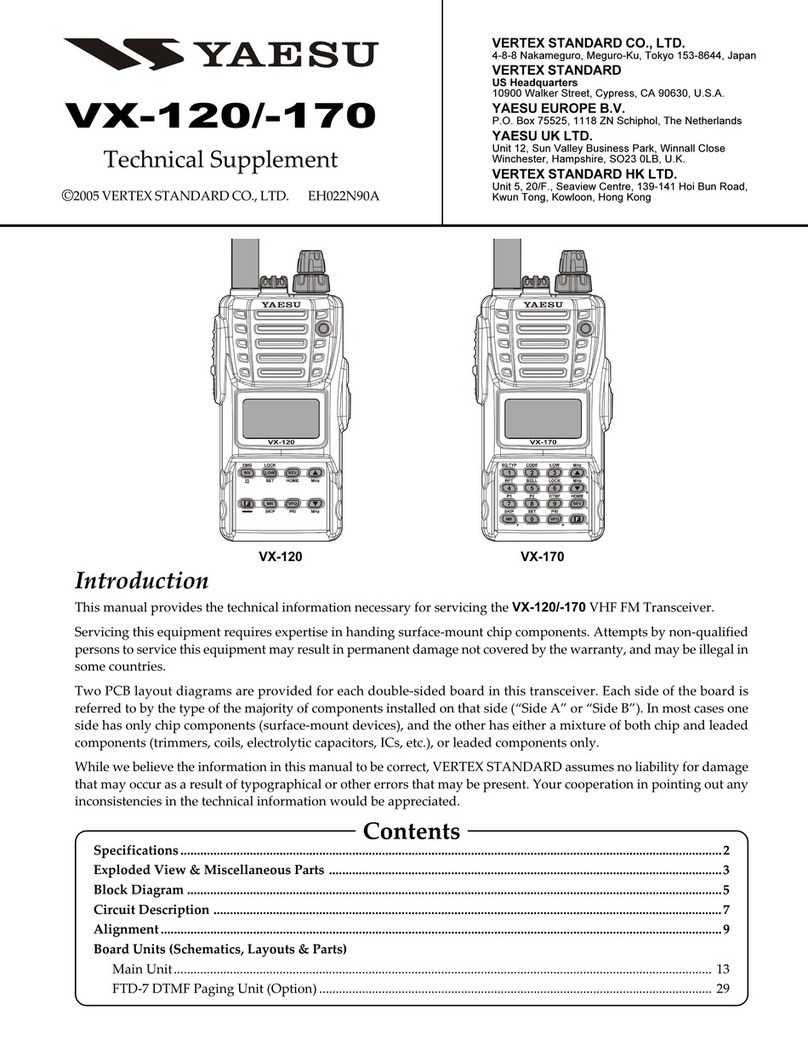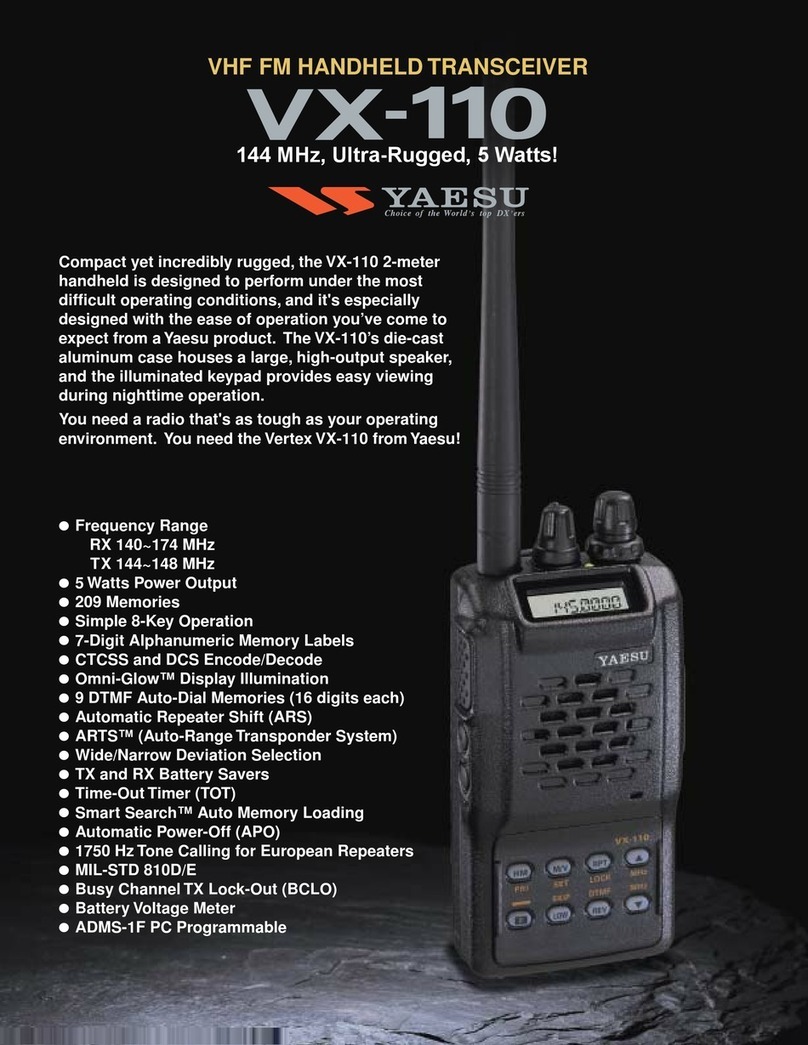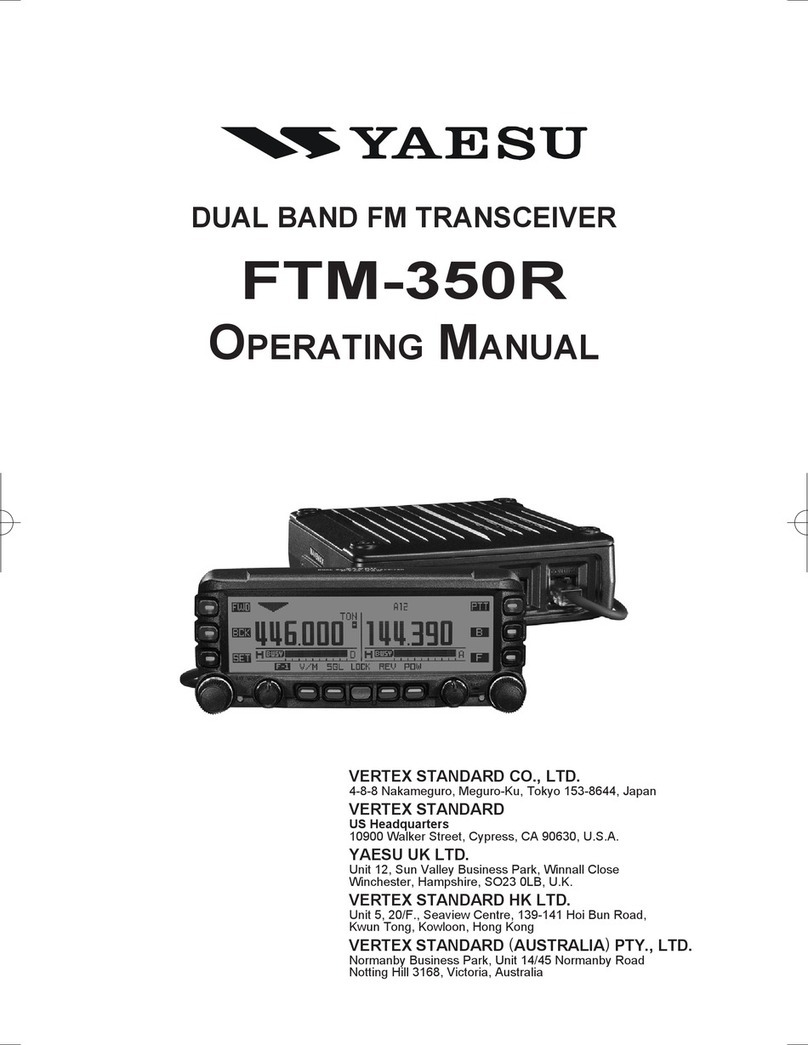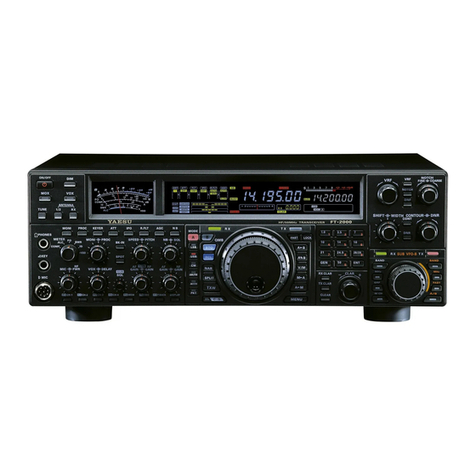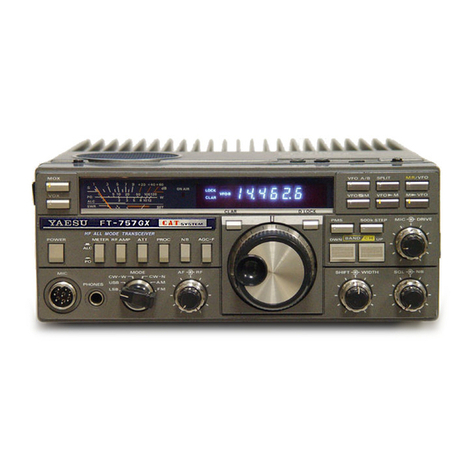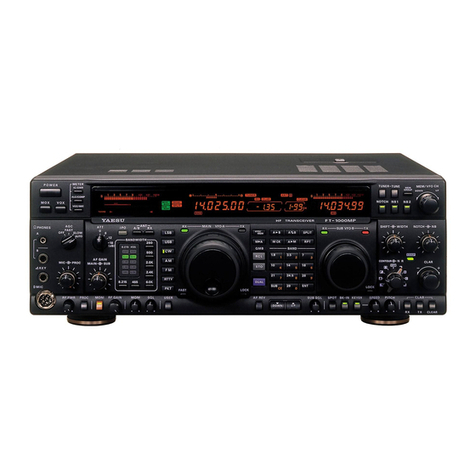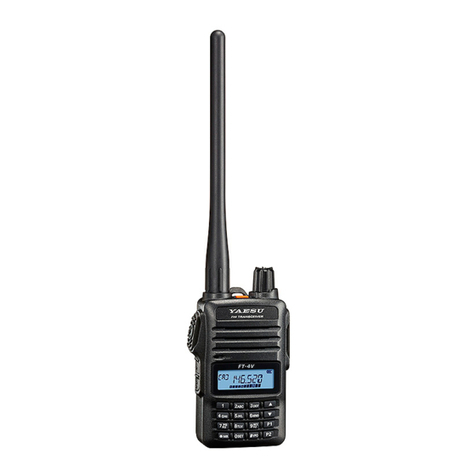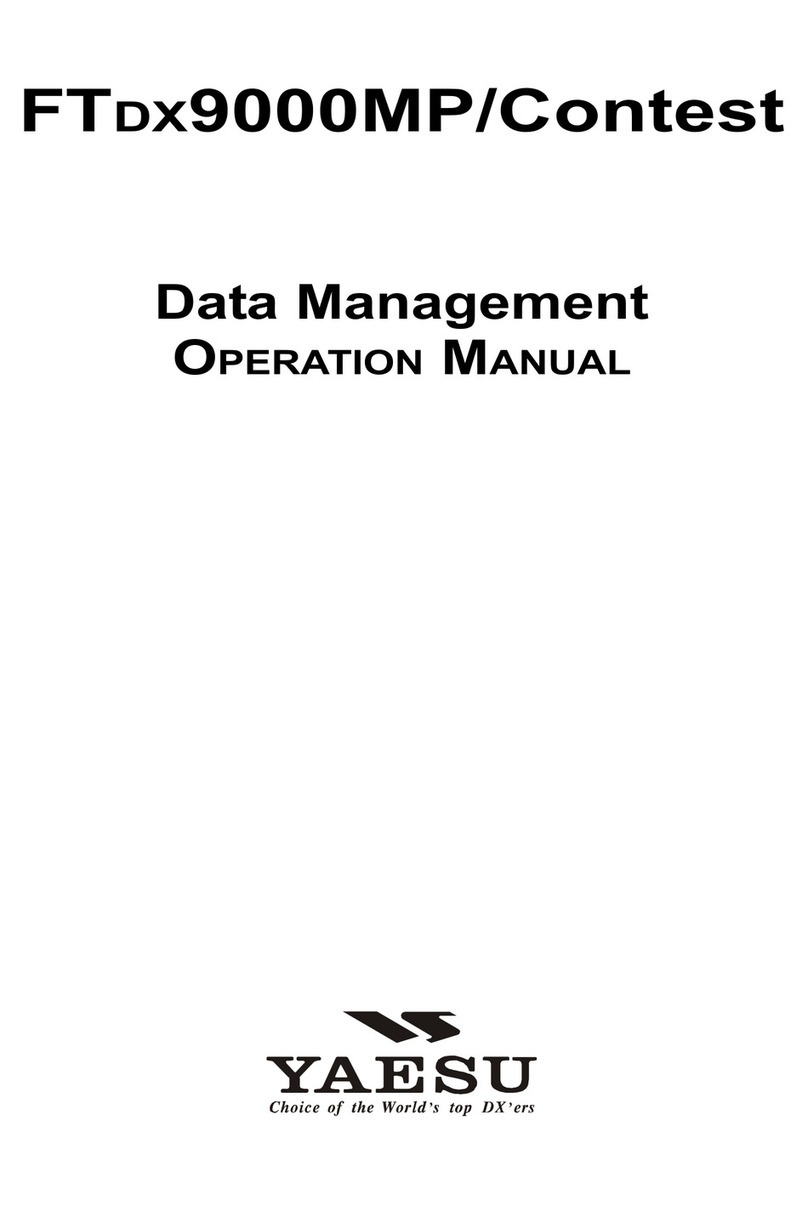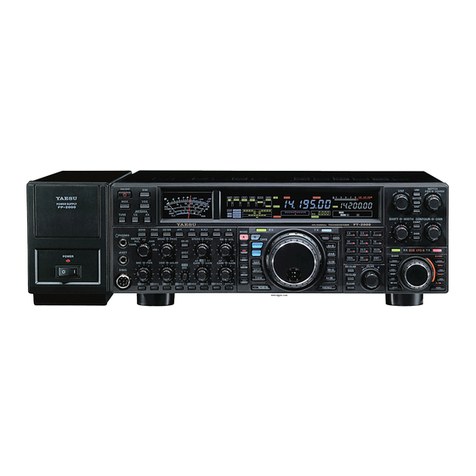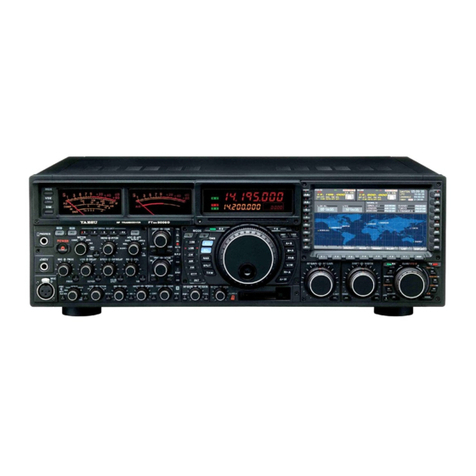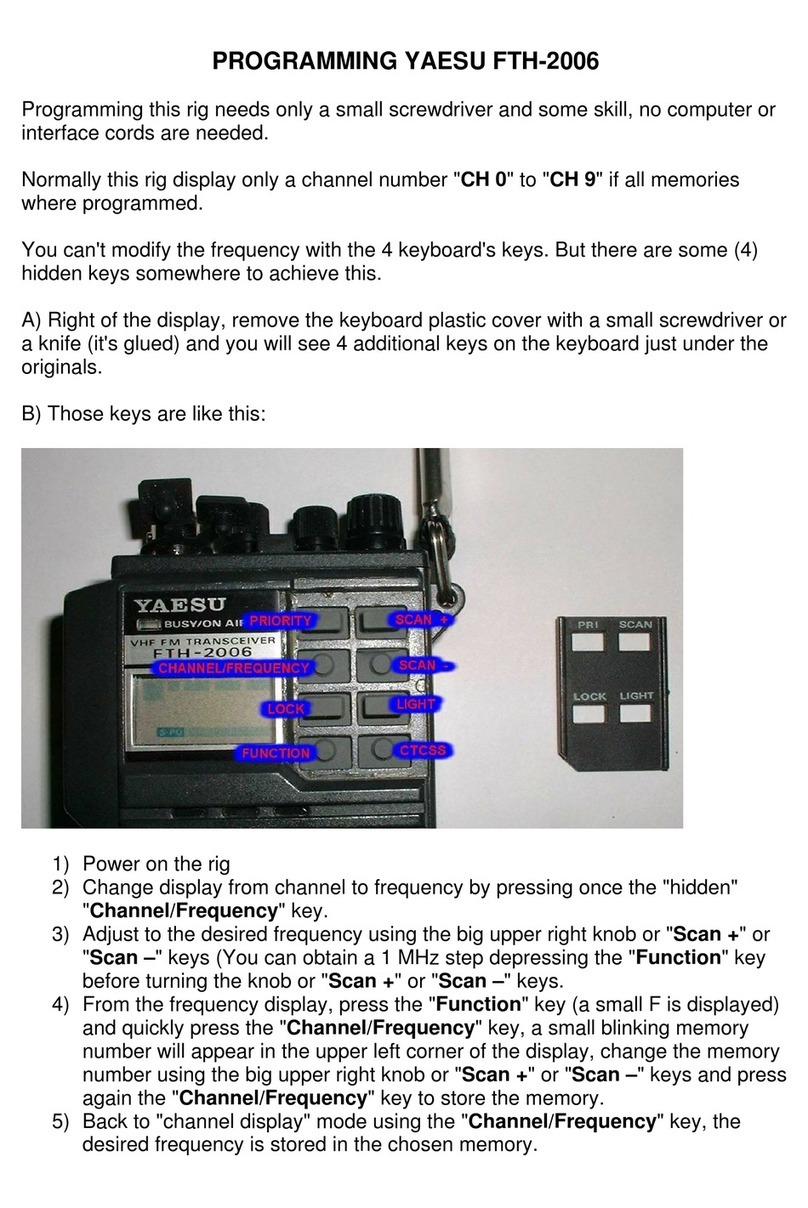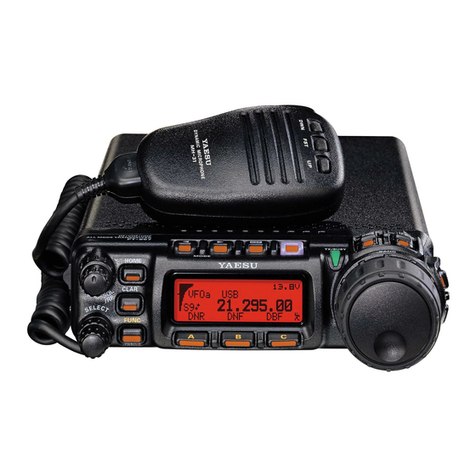Page 1FTDX5000 OPERATING MANUAL
GENERAL DESCRIPTION
Congratulations on your purchase of the FTDX5000 Yaesu
amateur transceiver!
Whether this is your first rig, or Yaesu equipment is already
the backbone of your station, rest assured this transceiver
will provide many hours of operating pleasure for years to
come.
The FTDX5000 is an elite-class HF transceiver and will pro-
vide exceptional transmit and receive performance. The
FTDX5000 is designed for the most competitive operating
situations, whether you operate in contests, DX, or digital-
mode environments.
Built on the foundation of the popular FTDX9000 transceiver,
and carrying on the proud tradition of the FT-1000 series,
the FTDX5000 provides up to 200 Watts of power output on
SSB, CW, and FM (50 Watts AM carrier). Digital Signal Pro-
cessing (DSP) is utilized throughout the design, providing
leading edge performance on both transmit and receive.
Available as an option, the DMU-2000 Data Management
Unit will provide extensive display capabilities via a user-
supplied computer monitor: Band Scope, Audio Scope, X-Y
Oscilloscope, World Clock, Rotator Control, extensive trans-
ceiver status displays, and station logging capability.
The Yaesu-exclusive VRF (Variable RF Front-End Filter)
provides exceptional protection from strong nearby signals,
and serves as a high-performance Preselector, ideal for multi-
operator contest environments. The filter is manually tuned,
allowing the operator to optimize sensitivity or signal rejec-
tion with the turn of a knob. For the ultimate in receiver RF
selectivity, the optional RF μ-Tuning Kits may be connected
via the rear panel, providing extraordinarily sharp selectivity
and receiver protection from close-in interference on a
crowded band.
Superb receiver performance is a direct legacy from the leg-
endary FTDX9000, FT-1000D, and FT-1000MP transceiv-
ers. In the VFO-A receive front end, you may select one of
two RF preamplifiers, or one of two IPO (Intercept Point
Optimization) settings, and/or three levels of RF attenuation
in 6-dB steps. The IPO settings provide direct feed to the
first mixer (VFO-B has one IPO setting), Dual Receives are
built into every FTDX5000. Both VFO-A and VFO-B receiv-
ers utilizes DSP filtering, and incorporate many of the fea-
tures of the FTDX9000, such as Variable Bandwidth, IF Shift,
and Passband Contour tuning. Digital Noise Reduction and
Digital Auto-Notch Filtering are also provided, along with a
manually-tuned IF Notch filter. The Sub receiver, used for
monitoring within the same band as the Main receiver, is
ideal for watching both sides of a pile-up, or keeping an ear
on a DX station that is working stations by call area, etc.
On the transmit side, the Yaesu-exclusive Three-Band Para-
metric Microphone Equalizer allows precise and flexible
adjustment of the wave-form to complement your voice. The
microphone Amplitude, Center Frequency, and Bandwidth
may be adjusted independently for the low-frequency, mid-
range, and high-audio-frequency spectra. The transmitted
bandwidth may be adjusted, as well.
Advanced features include: Direct Keyboard Entry of fre-
quency and Band Change, Speech Processor, IF Monitor for
Voice modes, CW Pitch control, CW Spot switch, Full CW
QSK, adjustable IF Noise Blanker, and all-mode Squelch.
Four TX/ RX antenna ports, plus a receive-only antenna port,
are provided on the rear panel. The front and rear key jacks
may be configured independently, for paddle input, connec-
tion to a straight key, or computer-driven keying interface.
Both Digital Voice Recording and CW Message Memory are
provided.
Three unique windows on the right side of the front panel,
display the VFO-B frequency and graphically show the VFO-
A and VFO-B DSP settings. In Menu Mode operation, these
windows display the menu values, for easy setting.
Set up of frequency, band and mode is especially convenient
on the FTDX5000. Besides direct frequency entry for both
the Main and Sub VFOs, separate keys are provided for band
selection. Each band key accesses three independent VFO
frequency/mode/filter settings per band. You can establish
separate VFO settings for three different parts of each band.
The two (Main and Sub) VFOs allow simultaneous recep-
tion and display of two different frequencies, even in differ-
ent modes and with different IF bandwidths. The Dual Re-
ceiver audio can be combined, or partially mixed in each head-
phone, or monitored separately in each ear.
In addition, 99 memories are provided to store: frequency, IF
filter selection, clarifier offset, and scan-skip status. What’s
more, five quick-recall (“QMB”) memories can instantly store
operational settings at the push of a button.
The built-in automatic antenna tuner includes 100 memories
of its own, to automatically store antenna matching settings
for quick recall later.
Dedicated AFSK and FSK connection jacks on the rear panel
provide simple Interfacing for digital modes. Optimization
of the Passband filters, DSP settings, carrier insertion point,
and display offset are all possible via the Menu program-
ming system.
The Yaesu CAT system provides a direct link to the trans-
ceiver CPU for computer control and customization of tun-
ing, scanning, and other operating functions. The FTDX5000
includes a built-in data level converter for direct connection
to a personal computer serial port. Yaesu products are sup-
ported by most of the leading contest and DX logging pro-
grams. The extensive programming protocol is described in
the CAT System, if you wish to write your own software!
Advanced technology is only part of the FTDX5000 story.
Vertex Standard stands behind our products with a world-
wide network of dealers and service centers. We greatly ap-
preciate your investment in the FTDX5000, and we look for-
ward to helping you get the most enjoyment from your new
transceiver.
Please feel free to contact your nearest dealer, or one of Ver-
tex Standard's national headquarters offices, for technical
advice, interfacing assistance, or accessory recommendation.
Watch the Vertex Standard U.S.A. Home Page for late break-
ing information about Vertex, Standard Horizon, and Yaesu
products: http://www.vertexstandard.com.
Please read this manual thoroughly, to gain maximum under-
standing of the full capability of the FTDX5000. We thank
you again for your purchase!


